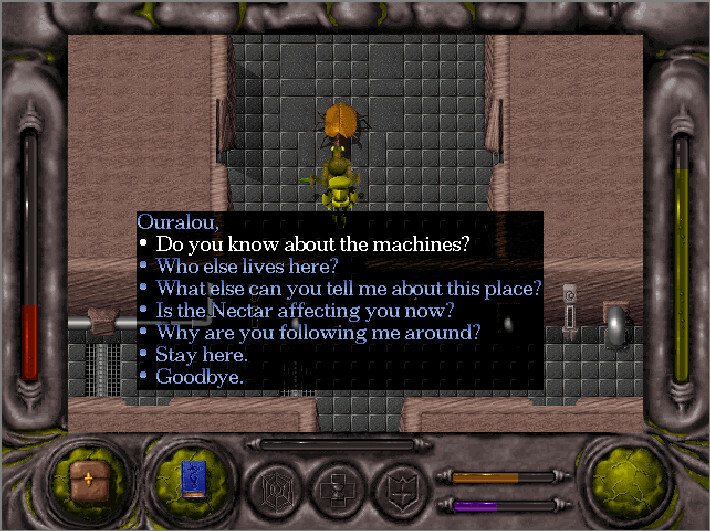
Entomorph: Plague of the Darkfall was a 90’s action-adventure role-playing game that… I still struggle to describe today.
It’s a wildly “all over the map” type of experience somehow pulled through by the very nightmarish storyline.
I played it when it first came out so now… I paraphrase the following heavily and try to recall this from memory:
I remember the game starting on a beach-side village, the place being swarmed by undead and giant insects. You have to go do something to save the village from this invasion, something dark that’s falling over the world… You eventually do, pretty early on, stave off the village invasion by bringing back the village’s “protector” (some giant squid god).
After this, you’re tasked to save the world by going on an extensive quest that has you exploring an ant hive, fighting giant wasps (if I remember right), and turned into one of the giant buglike xenomorph creatures that are slowly destroying the world. At some point you realize that these giant creatures were actually human, and you were killing transformed people.
You turning into one makes you a target for other humans, but you can also talk to giant ants now… being an insect helps you relate to the insect condition…
A small tangent here before I go on describing the story from whatever vague memory I have of it: The game let you return to the opening village, so once you became one of these bug-monster-creatures, and you tried going back, your villager friends would attack you. That bit kind of blew my mind for how “aware” the world was of what you were and the way you occupied space in it… Ok, so back to recalling the story…
There was also a tangent mini-game that you could find. If you explored the jungle, you found a cave who’s opening you could punch open. Once entering that cave, you did this little side-story for some alien’s that crash landed in the world (I think it was aliens). As far as I remember you had to save them so they could… go home? I can’t fully remember. This game had tangents. It was a tangled web of a story.
At the end, when you fully transformed into a monster, you found this queen. She was human too once and transformed into a monster, and she was the reason things were falling apart in the world. You had to free her by… killing her? …defeating her? I know you did one of the two, and she was this giant glob of flesh after she died, and then a bunch of stuff happened, and the ending could either be very sad or less sad… ok, thank you for bearing with me.
I can’t fully remember, but here it is. My weird account of a truly weird and bizarre game. I think what’s interesting about it is that recounting the game is just about as bizarre as the actual real storyline.
The way the game was designed was this top-down action adventure, but it kept changing theme and often the way you interacted with the world. Like it was a truly wild trip that drug you from one form to another.
It’s one of my favorite examples where the recollection of the game is just as weird as the actual game. The game is as much of a fever dream in reality as it is in memory.
If you haven’t played it, I really recommend it, and try finding all the easter-egg tangents.
Entomorph: Plague of the Darkfall is a weirdly self-aware game…
Try recounting any game from memory (that you played when you were younger). See how bizarre it all gets!
– There’s an entire playthrough of the game here: https://www.youtube.com/playlist?list=PL06BCC7AB9CF4EE17
Stories in games are intrinsically weird. This is why I think they are better when games aren’t trying to be movies.
I would go so far as to say that pretty much every game is a weird fever dream. They are all interaction systems, that are built to be engaging when interacting with them, with story either roughly pancaked over them (I wanted to say “laid over them” but I like the idea of placing a pancake over something and saying “good enough”), or meticulously sewn in as part of the experience… Story is either just a way of “theming” something, or it’s a necessary part of the experience…
Either way that a game’s story is done, the fact that they require a player to “interact” makes having a story a lot harder, more awkward, stranger… than it does in any traditional linear media.
Will the player see this important piece of dialogue? Will they listen? Are the cutscenes skipped? If it’s an open world, and they can go wherever they want, there’s so much room for error in storytelling…
A very long time ago, playing Morrowind, I remember killing an important character. The game prompted me that this NPC was important for the story, and I can either restart or choose to play the game in this broken story state… You broke the story! Now restart or live with the world being confused, broken, and unable to progress. I kinda loved that. It captures how games are these giant weird story machines.
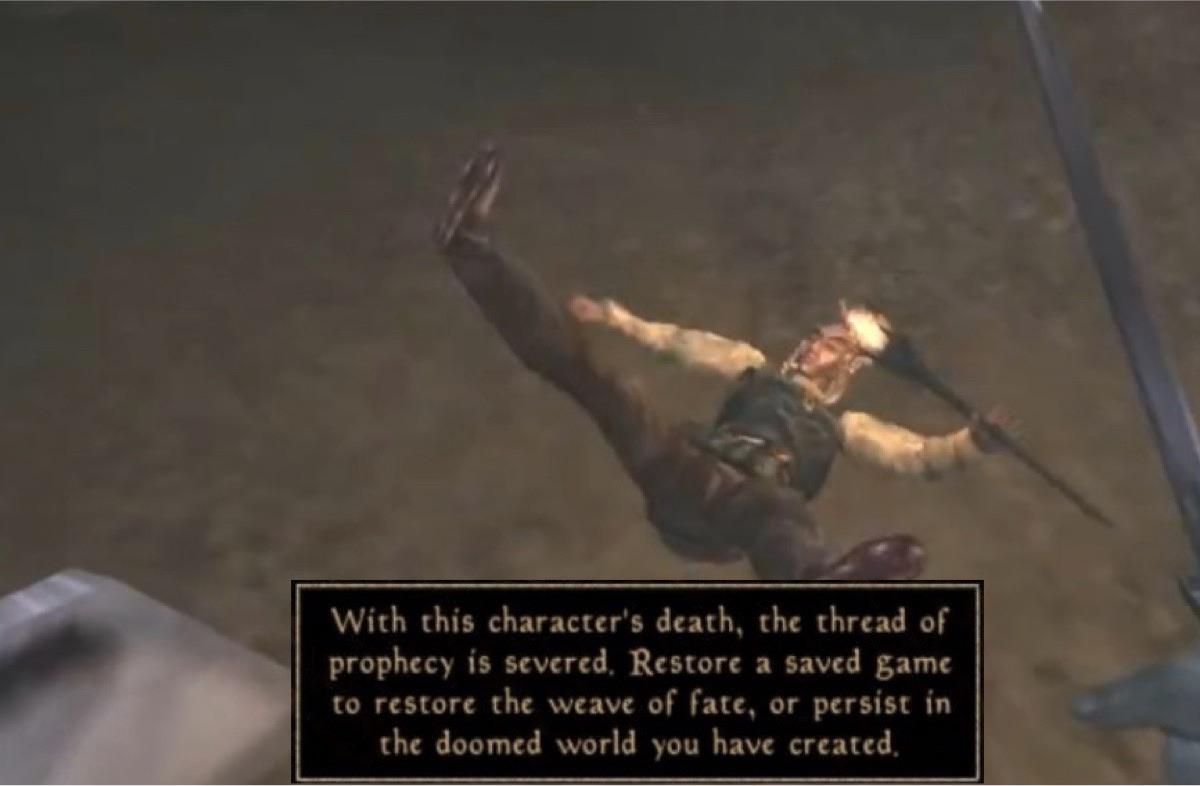
It’s hard to make games make sense. They are awkward things, seemingly meant to break.
“Fever dream” is probably my favorite way to describe any attempt at telling a story in a game.
It was maybe a decade since I played Super Mario World. What the game was about, how my mind tried to remember this strange world that I played through, slowly eroded into this weird big realm of tangents and secrets.
My dreams about The Legend of Zelda: Link’s Awakening (for the gameboy) are, appropriately enough, just as bizarre as the original experience.
My opening point of paraphrasing a game’s story from memory: I keep telling people that they should NOT re-play games from their childhood. They should hold onto that weirdly eroded memory of playing it and make a game out of that. The memory would make a REALLY good surreal game.
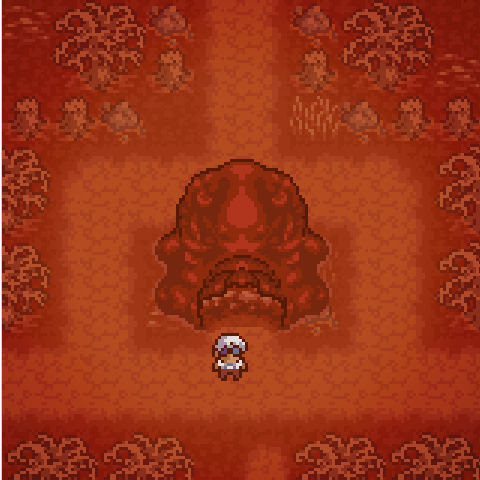
“Anodyne is a unique Zelda-like game, influenced by games such as Yume Nikki and Link’s Awakening. In Anodyne, you’ll visit areas urban, natural, and bizarre, fighting your way through dungeons and areas in Young’s subconscious.”
See Anodyne for what I mean!
Again, I strongly suggest playing Entomorph: Plague of the Darkfall if you haven’t already… You can get it on GOG.
All this said, I think it takes a different type of writer to make a good story for a game.
I think it’s unfair that games try to be so much like movies (as a type of “ideal”). I don’t think games will ever be like movies, in terms of storytelling, or the “quality” of storytelling, just for the fact that they are… well… games. They are interactive machines, simulations, error prone just by virtue of involving a player.
A better comparison might be “theater” but even then, the player doesn’t have a script… so storytelling is always done as weird hacks. Imposed cutscenes. Guiding the player. Little bits left around the world. Audio recordings. Weird writing on the wall… How else? They might kill someone important and then the game will just be proudly broken.
Stories in the AAA games that try to be more like movies (Drake’s Fortune, GTA, God of War…) all are tremendously underwhelming if you remove the interaction. I think that maybe The Last of Us would be just another sub-par zombie movie if you translated it, exactly as it is, to film. Stories in games are simultaneously made better for the interaction, but also often broken for it.
I understand that I am usually very critical of AAA games. I do think it’s important to be more critical of them because they are the most advantaged and platformed form of game. Inevitably they are what “everyone else” outside of games ends up perceiving as “what a game is”.
We should expect better, in every respect of the term (ranging from worker exploitation, abuse, and problematic content). I think AAA is often representative of our urge to give “power” (advantage, resources, platform) a free pass because of the glamor they represent.
Work by smaller creators doesn’t enjoy that type of privilege, even if they do all the things better and right.
I think it’s interesting that, when AAA does do something right, it gets lauded more than it deserves for that one basic thing.
“It’s texture, really. All texture – spiralling, moving – the texture of space and of time, looking back, trying to look forward, where I’ve stood, where I might stand again…”
When I played Spider-Man: Miles Morales there were aspects of how the game delivered story and narrative that I thought was refreshing.
For example, the main character subscribes to these podcasts, and they play as you are swinging around the city. The tone of the writing here is what stood out to me.
At one point something significant happens in the game world (the bridge getting attacked) and the podcaster does a “self care” episode basically telling people to be nice to themselves. During this, especially when the podcaster said “self care”, I was cringing and waiting for her to say something sarcastic or demeaning about self-care, expecting this to be a setup for a joke. That didn’t happen. The dialogue in the entire game was refreshingly kind as compared to games like GTA V (where the radio will play jokes about child abuse).
The overall tone in the writing and dialogue here surprised me.
Writing in AAA games comes across as trying “too hard” to be gritty, tough, grimy, manly, dark… To a point of it being obnoxious. It almost becomes a parody of itself.
Any supposed “satire” in a game is lost to the patented way that the games industry itself is built on abuse. Rape, exploitation, preying on vulnerable people, etc… are themes that don’t really get “unpacked” in these games in ways that you would expect from an artistic medium. They’re just used as Basic Plot Points. It’s an expression coming from an industry that is too self-aware of how abusive it is, while churning out work that celebrates such abuse (for example, here is a good piece unpacking things like sexual violence toward women in The Witcher 2, also going to mention that God of War has you use a woman as a door-stopper to solve a puzzle, at one point).
In Spider-Man: Miles Morales’s case it was nice to experience something that actually had a humane tone… Also, making my point: I guess it says a lot when you say you enjoy writing in an AAA game because it wasn’t aggressive or abusive.
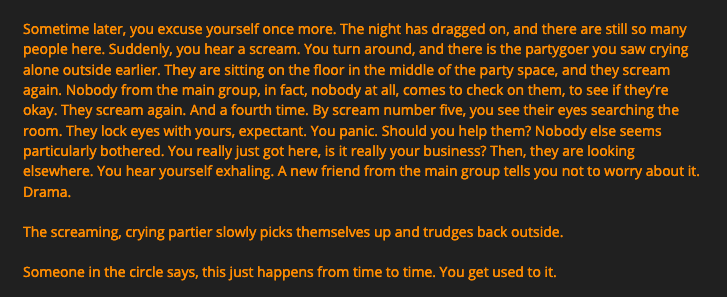
– IN THE LAND OF ENDLESS GREED by No Escape
Popular videogame culture and AAA’s inability to address issues of abuse is largely why I appreciate writing like Nate Kiernan’s The Witcher 2’s War Against Women, IN THE LAND OF ENDLESS GREED,
or this recent Vice piece on The Hidden, Destructive Legacy of ‘Duke Nukem’…
I purposefully mention “Duke Nukem” here because (big names omitted), a long time ago, “that very connected and influential rapist composer” jokingly told me how his “misogynistic game designer friend” that created Duke Nukem couldn’t possibly come up with anything else because Duke Nukem was exactly the type of person he was.
“Rapist Composer” laughed about how Duke Nukem couldn’t come from anyone else but “Misogynistic Game Designer Friend”. “Rapist Composer” also created the famous soundtrack for the game.
He joked about how the company would bring in “wh*res into the office” for parties (his words, not mine), and the reason that the “then long awaited sequel” was delayed was because nobody was really working on it. He gave more of a rundown as to why, and what happened, but that’s the summary… I say all this because the irony of a “famous rapist composer” talking about his “famous misogynistic game designer friend” really captures the issues I have with this type of established video game culture.
The “men at the top” are this way.
They create art that celebrates who they are.
Abuse becomes the cultural legacy then.
All these reasons are why I hold AAA to a different standard.
I think it’s really interesting to observe the difference between approaches in storytelling coming from indie and AAA. Indie kind of evolved into its own area of exploring what a story might mean in a game, how to tell one, how not to tell one but still convey a vague meaning through the poetry of interaction (see Journey, or Abzu)… and then the way that can get contrasted against the grand ambition of AAA to “be like Hollywood”.
I think (as a generalization) that 90’s shooters were pretty amazing. They were truly different ways of approaching a fictional world, placing someone in it… in unconventional ways too. My favorite example is the game Quarantine (1994). There’s a lot of these examples of tremendously unusual 3D-world-things from the 90’s. What stuck out for me in Quarantine (from memory again) is that you played a Taxi driver in this city. You picked up people. They told you stories about the world as you were driving them around. You learned from watching the world and listening to the people.
The overall objective was to get out of the city. The story to this one was really interesting. In many ways I think it was ahead of its time in terms of how it chose to tell one.
I make mention of Quarantine, and that general era of FPS games, because I think it’s fascinating how that kind of movement became Half Life 2, became these AAA first person type games where the story is trying so hard to be a blockbuster like experience that the actual nuance of how it’s told gets lost.
It’s about cutscenes imposed between gameplay, and then the rough bits you might gather from interacting with the environment, or the narrative that plays out between characters… It really only unfolds in the pause between interaction.
Again, I think the scale of these AAA games kind of “killed” the way storytelling in mainstream games is explored. It’s not so exciting or innovative anymore.
To me, Quarantine was much closer to an interesting “Hollywood” type story for how it told its story, than newer titles like The Last of Us are.
Maybe the established “pattern” that larger games follow kind of loses the depth that a story could have.
I think it’s interesting to observe how AAA games are like if you play the game muted throughout, skip all the cutscenes… How much of it do you “get” then? Is the story even necessary? If you try playing AAA in different ways you kinda see that story is more cosmetic (for lack of a better term). It’s not really intrinsically necessary when broken away from the actual interaction, and to me that seems like a loss.
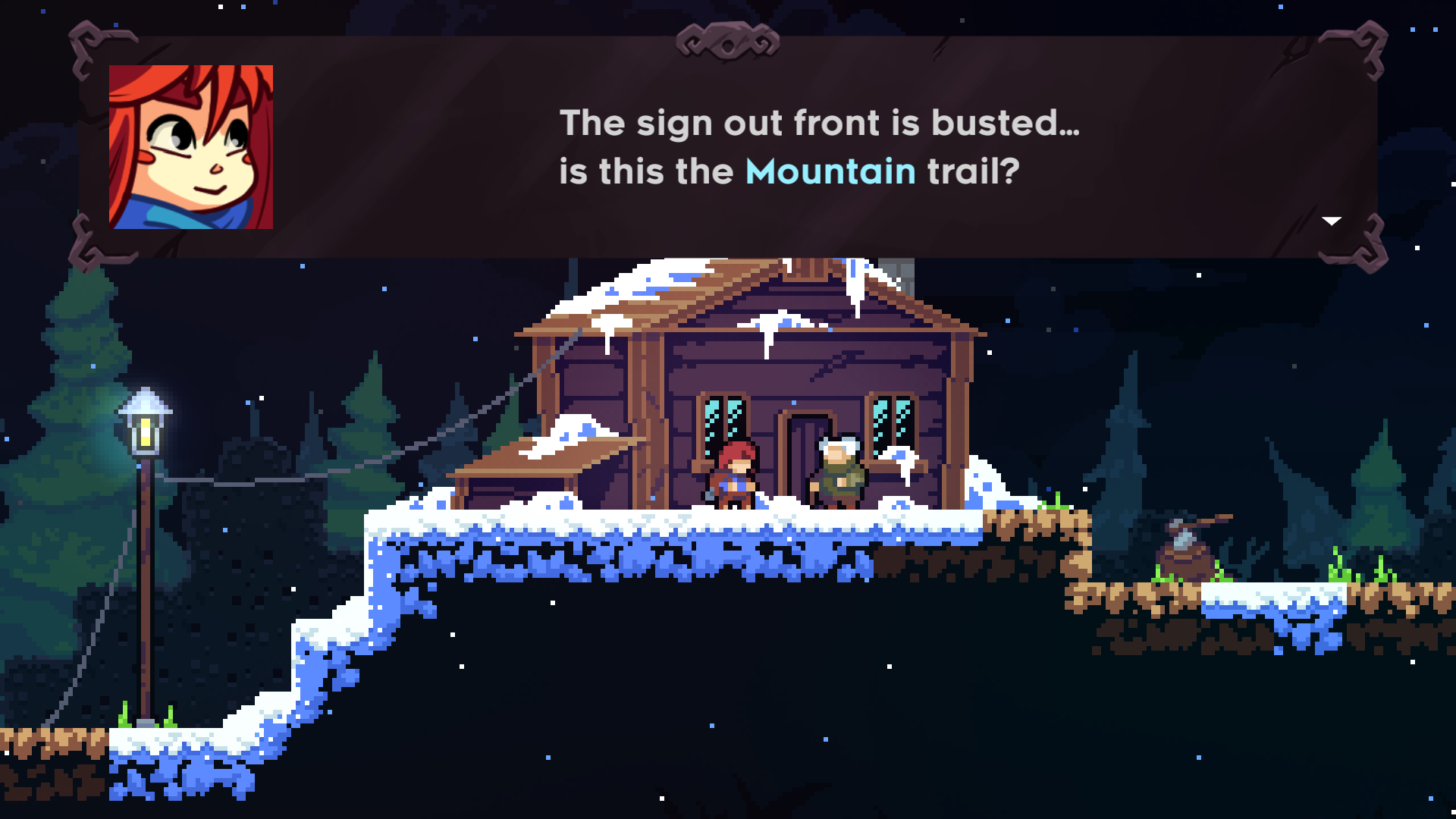
As a counter example, see very classically designed games like Celeste and Lucah: Born Of A Dream…
Lucah: Born of a Dream explores themes like mental health. This article by Grace Benfell is a good summary of it:
“Lucah: Born of a Dream is about that dread, that surety that if salvation exists it is not for you. Every death ticks you closer to damnation or real non-existence. The only way out, it seems, is to play better, to win more, to master yourself, to overcome your human frailty. Which is, of course, an impossible task. You need a grace that is not available to you. Playing Lucah means facing the terror of damnation. With every death you draw closer to oblivion. It is a potent journey of queerness through patriarchal, heteronormative christianity.”
I think Lucah is an amazing game to examine for how you can design meaning through tradtional gameplay. The story, narrative work, all of that… is intrinsically part of the game.
Celeste is a beatiful example too because it offers you this really deep, complex, emotional story through the metaphor of gameplay (as well as the more obvious writing). The way writing in this game was done is touching. It’s a pretty tremendous achievement, especially if you’re looking at “classic game design” merged with story.
(Worth playing: Myst (1993) which was a story rich world that slowly revealed itself through discovery and exploration. Myst even had a book series. I was a massive fan and read them all. The very intricate and story rich background to all the games is what made them so striking.)
The above examples are why I love so much of the storytelling and narrative design happening in indie. Discovering new ways of telling a story is very much still alive!
I think it’s equally as fascinating to play games like Journey or Abzu and see how most of the context of what you are doing comes from traveling through the world. It’s more like playing through a poem.
Abzu does end up making sense, and you kind of understand what you are doing in this world by moving through it.
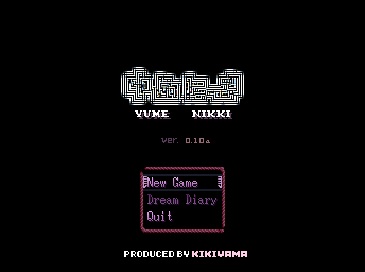
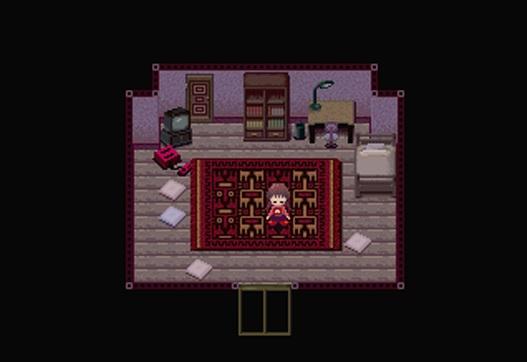
My favorite example of this, and one that I think beautifully captures explaining context, story, meaning, entirely through interaction is Yume Nikki. Link to Wiki page for more history.
Yume Nikki is a game that you really need to experience for yourself because it’s hard to do it justice in words. The game doesn’t have words. The game’s meaning is conveyed through experiencing it. It’s very memorable for that.
In Yume Nikki you play a girl at home in her appartment. Everyday life is mundane. You can go on your balkony. You can interact with some things in the room. It’s painfully mundane here.
You go to sleep, and the dream world opens up to you. This is where everything happens. It’s this really powerful type of adventure through surrealism.
When you wake up, you return to the mundane, and then you go back to sleep… It kind of takes place in these many layers, and meaning is conveyed through just experiencing what the game puts you in.
I think, overall, it’s games like this (Yume Nikki, Abzu, Celeste, Lucah) that are worth looking at for how you can get a lot of meaning, story… just for how they ask the player to interact. You’re placed in this fantastic world. Why even say anything? Exploration, engaging with what the game is asking you to do, builds such a powerful narrative even without words.
It’s like a conversation between the game and the player.
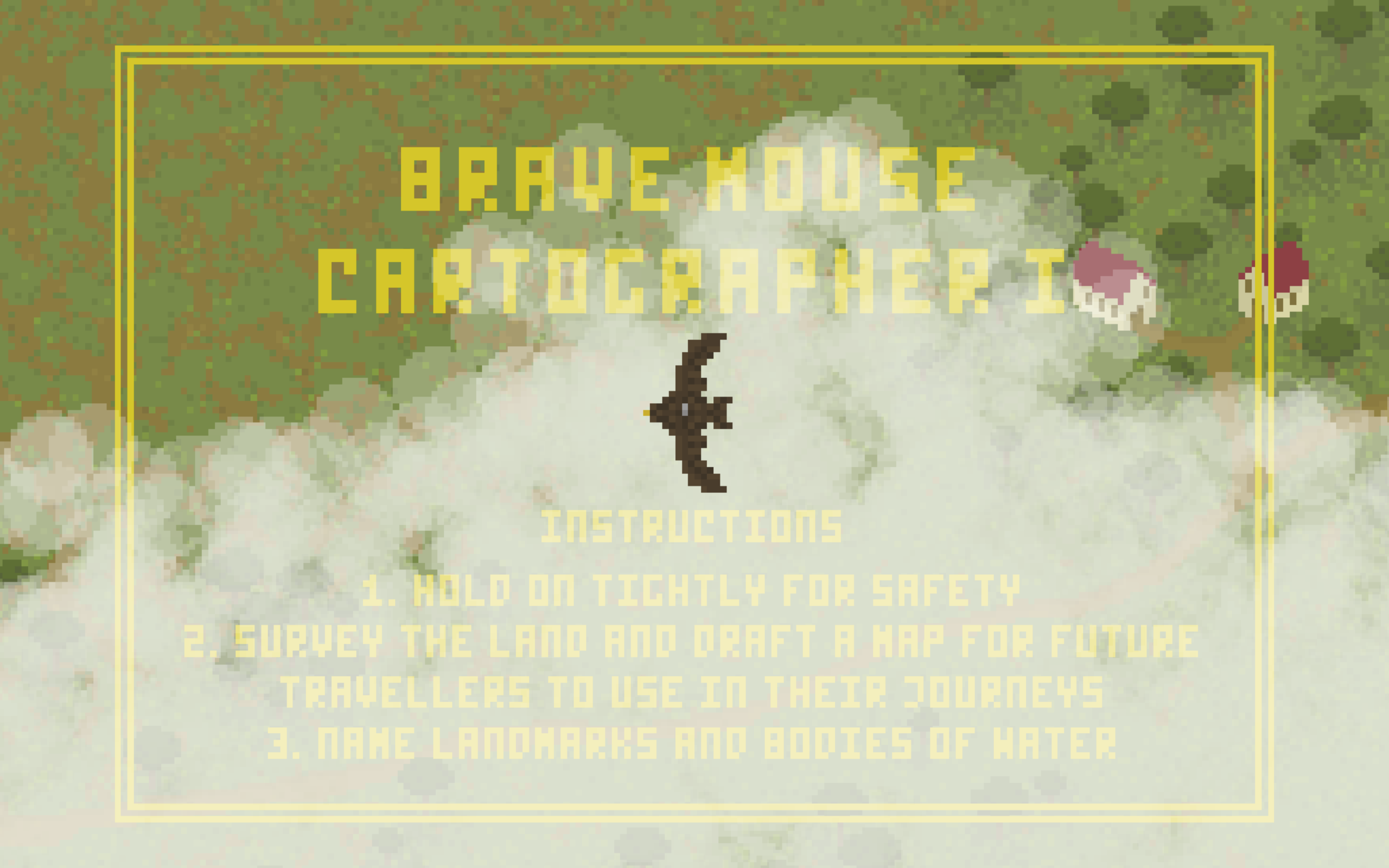
Thinking of games as “beautiful weird story machines” is one of my favorite ways of viewing them!
One other beautiful example of a game that captures a similar type of “storytelling” as Yume Nikki is Brave Mouse Cartographer.
I encountered it while judging for A MAZE Berlin, and this one really made me feel things. It’s a tremendously unique way of building a relationship between the world and the player by just showing (not telling, not even interacting).
In Brave Mouse Cartographer you watch a mouse that is riding a giant bird flying over this fantasy world. You see this beautiful scenery float by. Areas of interest are often marked by changes in the background music. It’s beautiful, ambient, slow… The point of the game is to observe and build a map based on what you see of the world (be a cartographer).
You do all this with friends. Brave Mouse Cartographer is described as a cooperative mapping game.
The way it builds on curiosity, and you invent this story of the fantasy world, where what is, what the story behind it might be… just through observation made this a beautiful experience. It’s an extreme example of what I talked about, but one worth making note of.
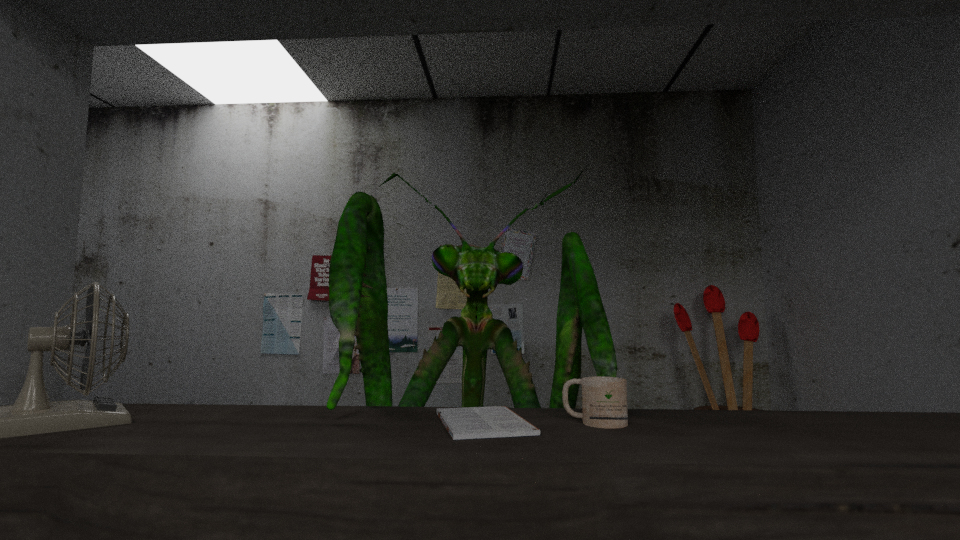
“Play as a captured butterfly hybrid looking for a way to heal her broken wings.”
– From “Butterfly Collector” by Valerie Paris
These indie game examples are some of my favorite aspects of game storytelling because it’s the type that stays with you.
In a way you, the player, are “writing the story” too whenever you play a game. You remember it for what you did in the game, and in a way it becomes part of your own personal fiction. It’s a type of “lived experience”.
Games are all worlds in themselves. When we play them, when we live in them, all this is just as relevant of a memory as things you did “in the real world”.
Going out on quests with your friends is a legitimate memory that you made, and I love hearing how people recall things they did in games. “We went to this thing, and we defeated this creature, and then goofed around with the physics in these hills”… Games have stories built into them but they also let players tell their own.
So this is the type of thing that I think a lot of experimental indie games do well because they find new ways of telling these stories.
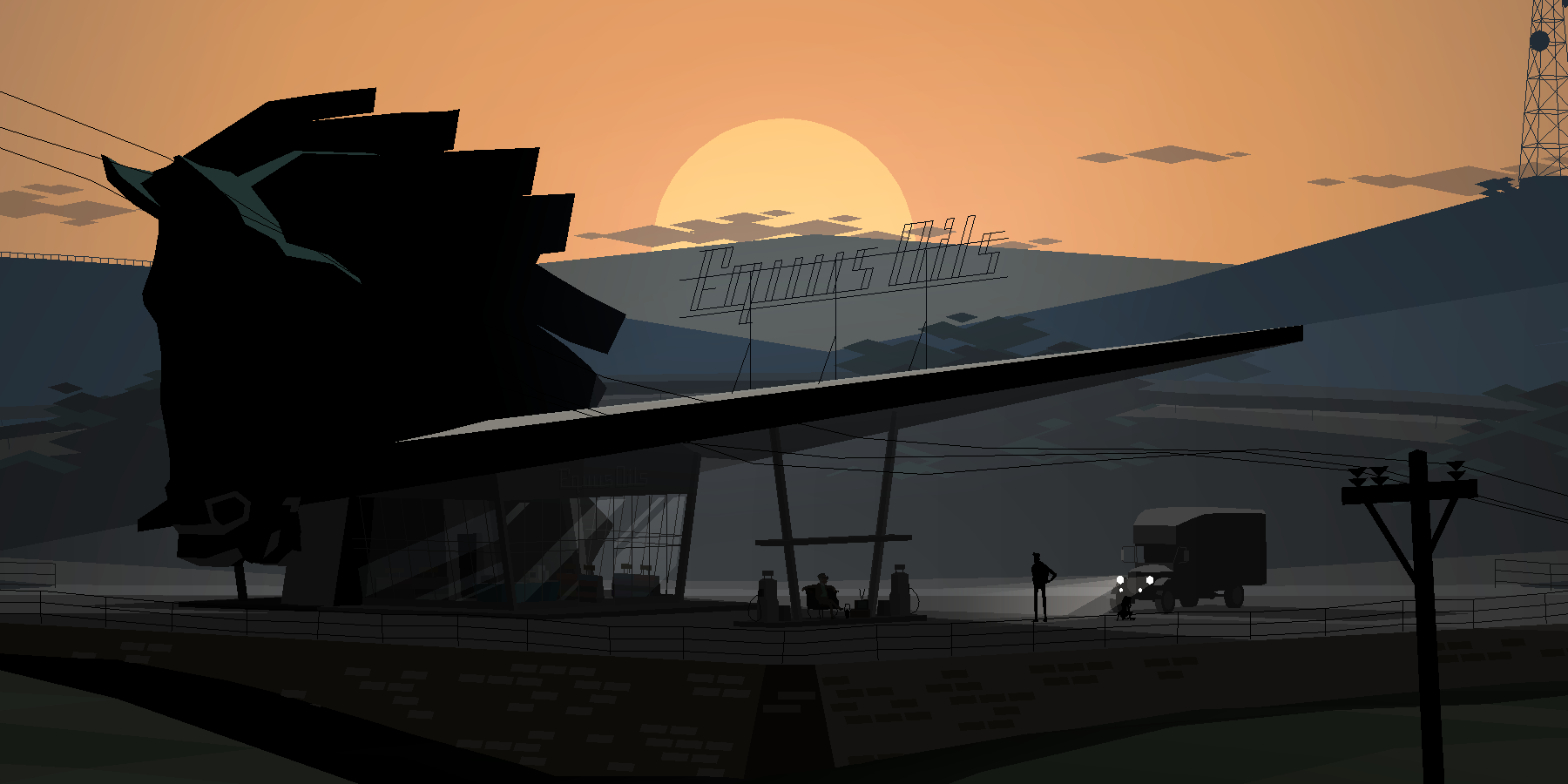
There’s SO MUCH unexplored space in storytelling when it comes to games. How you tell one. How linear you choose it to be. How abstract it is…
I think our perception of “story” in a game is kind of wasted on wanting to compare games to movies. Games can never be this. Games are something all to their own.
For example, consider the broad range of work being done here (from larger titles to very small)…
Kentuky Route Zero
“a magical realist adventure game about a secret highway running through the caves beneath Kentucky, and the mysterious folks who travel it.”
If Found
“If Found… is a game about searching for connection. Everything leads to this night when a black hole will destroy the entire world. Where did it come from? Is there any way to stop it?”
Extreme Meatpunks Forever
“A serial visual novel/mech brawler about four gay disasters beating up neonazis in giant robots made of meat.”
Where The Water Tastes Like Wine
“Travel the Depression-Era United States, laboring to pay off a debt by learning the true stories of 16 signature characters across a wide range of American experience.”
Diaries Of A Spaceport Janitor
“Diaries of a Spaceport Janitor is an anti-adventure game about picking up trash in an alien bazaar.”
Butterfly Soup
“A visual novel about gay asian girls playing baseball and falling in love. ”
Undertale
“Don’t know why… But a lot of people love this game. Who knows. You may love it too.”
Yurivania
“Stheno the gorgon wants her girlfriend Alraune to move in, but to accommodate a plantgirl Stheno’s room needs an overhaul!”
Tales From Off-Peak City Vol. 1
“It’s a hazy Sunday morning on the corner of July Avenue and Yam Street. Caetano Grosso, a former saxophone player and longtime pizza-maker, is just getting his pizza oven warmed up. Orders are trickling in, and he needs someone to help with the deliveries.”
A Hand With Many Fingers
“A Hand With Many Fingers is a first-person investigative thriller. While searching through a dusty CIA archive you uncover a real Cold War conspiracy. ”
Knife Sisters
“Knife Sisters is a dark, explorative, and erotic visual novel about emotions, power and dependence.”
Umurangi Generation
“Umurangi Generation is a first person photography game in the shitty future. Set in Tauranga Aotearoa off the back of an impending crisis you are a courier for the Tauranga Express.”
Disco Elysium
“Interrogate unforgettable characters, crack murders or take bribes. Become a hero or an absolute disaster of a human being.”
…are all part of a massive list of recommendations.
Disclaimer: It’s actually really hard to come up with a list because there’s too much good writing. Thank you. Sorry I tried.
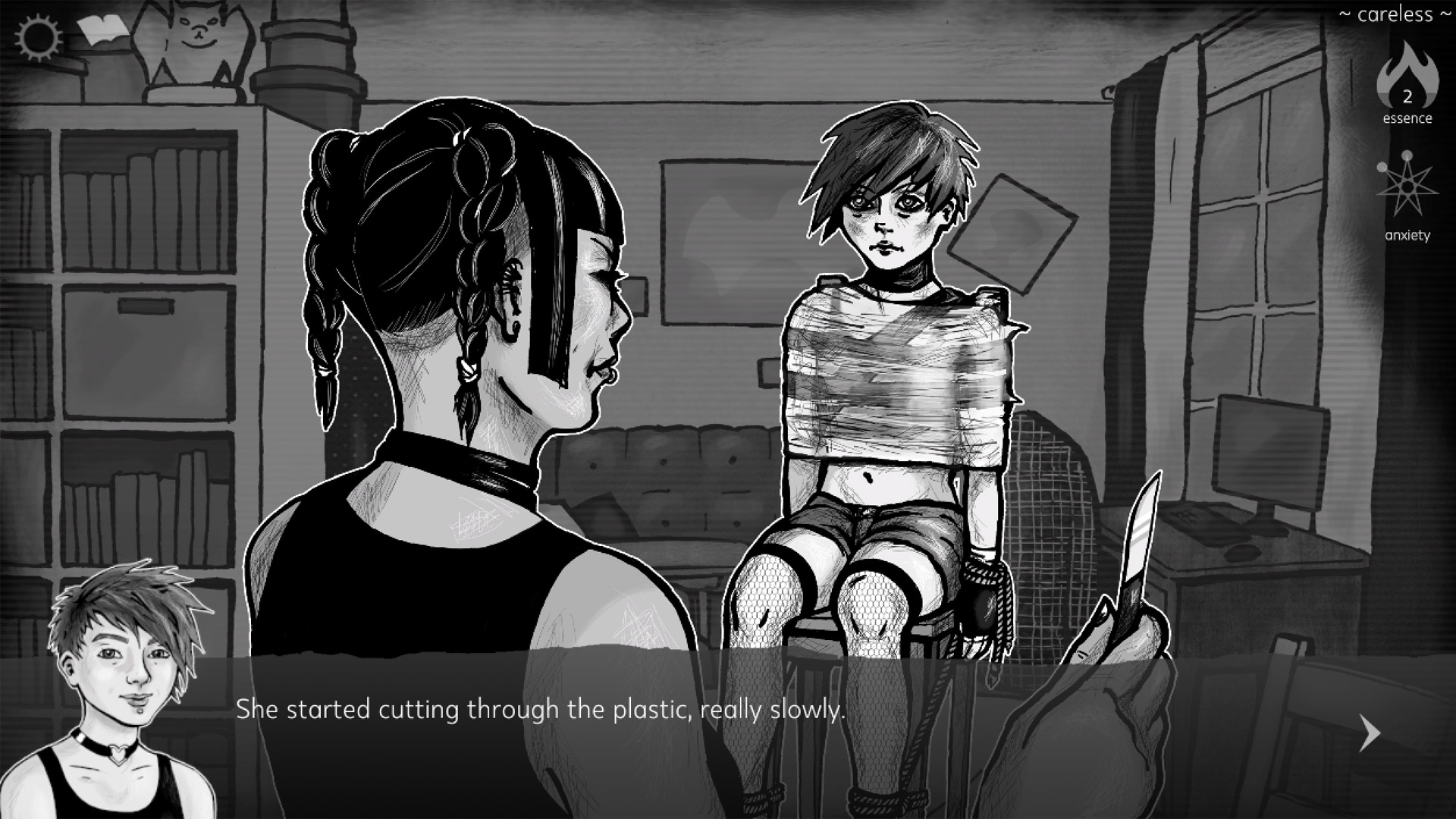
Knife Sisters is an amazing piece of interactive fiction.
It’s an “erotic visual romance novel”. That description might not be doing it justice because usually it’s the type of thing that I would brush off as “not my thing” (when I hear “romance” and “novel” in the same sentence).
The way this one is written is tremendously engrossing. The characters are complicated. There are a lot of choices. The story is so involving, I lost track of time.
The complex characters are what really stand out. It builds these relashionships, and the way that is done leads you to really care about everyone. While playing it, I was extra cautious about my decisions. I fretted about what to say, what to choose, almost at a level that I would in real life.
I think it’s interesting that, because it was more than just linear fiction, it led me to really care about the characters and what they think about me.
Knife Sister is a great example of comlex game writing.
The way games can get you to CARE about characters on a level that feels personal to you is something that makes them special. I know I’m not the only one that has reloaded saves, or not saved, or somehow tried to “break” the game’s system, just so I could avoid losing a character that I’m emotionally attached to.
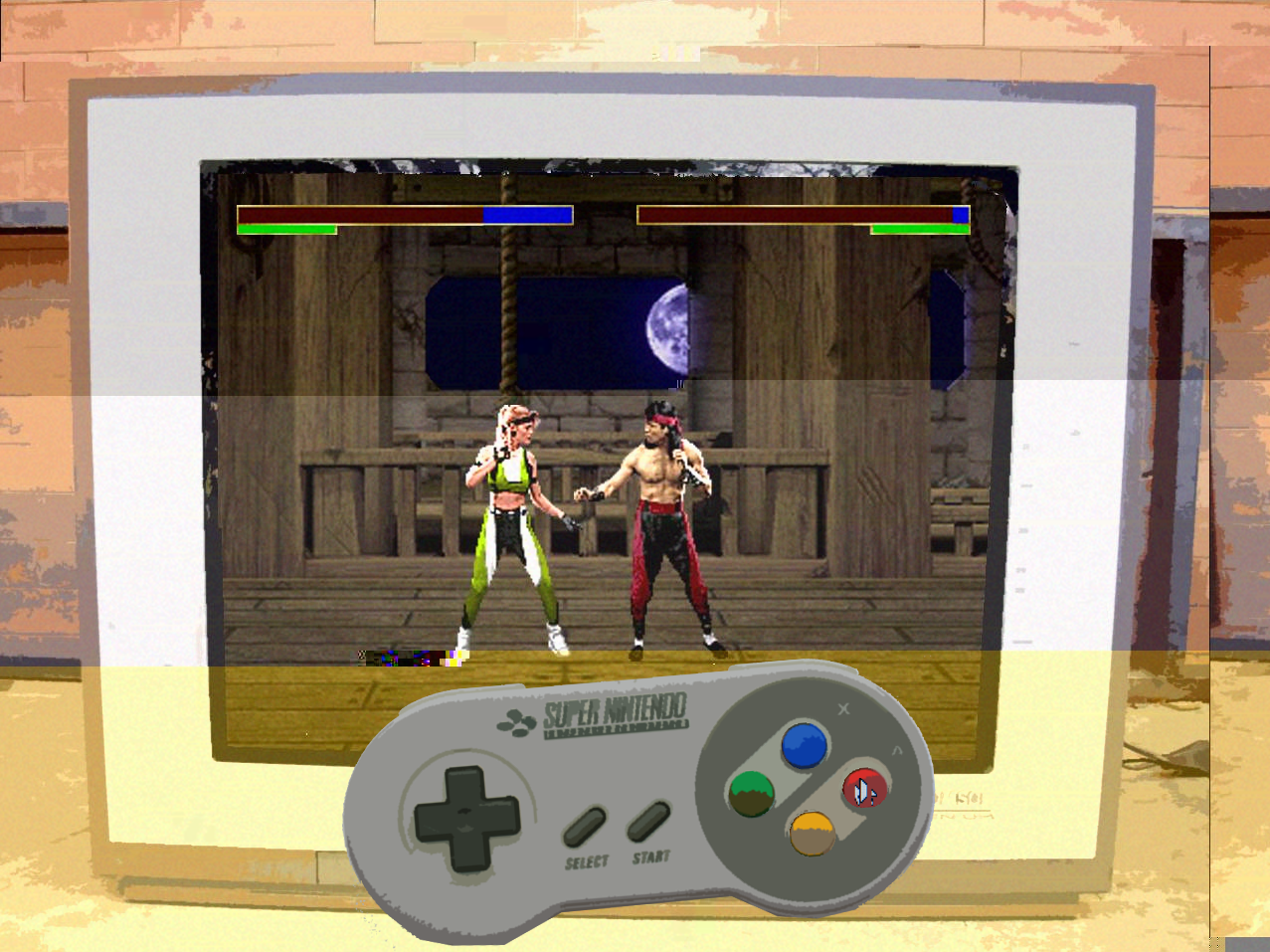
“Binary Distortion is a glitch trash kinetic/visual novel exploring gender and transgender issues / themes.”
– From “Binary Distortion” by tecgothica
Writing for a game, literally any type of interactive system, is radically different from writing something linear.
You’re basically tasked with trying to humanize and contextualize software.
I know people don’t like calling games “sofware” but in essence, when you strip out all that art, context… that “theming”… software is still what games are, and it feels good to stay humble about that.
For these reasons, game writing is a very technical thing that involves more than just “coming up with a story”. I think it’s much more technically complex than people give it credit for. Building story for a game involves some kind of awareness for the game’s system — the intricacies behind it, the design, how all those pieces should work together, as well as player behavior in that system. It’s about humanizing those otherwise faceless cold computer systems.
Games are not predictable. They are dimensional spaces that offer choice. I don’t think there’s every going to be a set standard for how to best write for them, and that’s why writing for games is so exciting.
Each game is different.
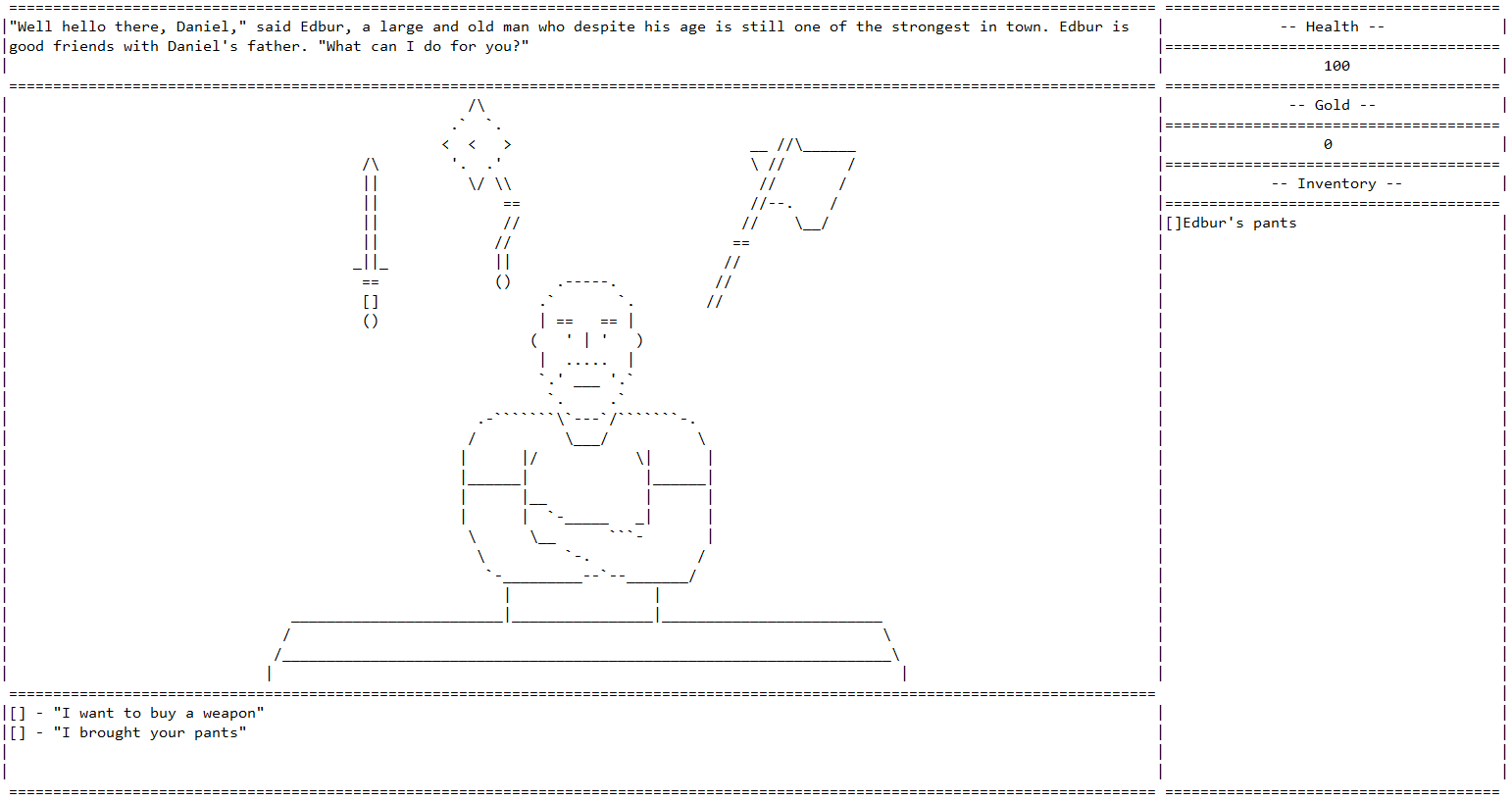
– From And yet it hurt by Sheepolution
My own interest in game writing is best described by the love of humanizing those “cold faceless computer systems”, and the things we do on them. The experimental work is what drives me.
Finding new ways of interacting with a machine means finding new ways of telling a story on one!
We are very used to looking at computers a certain way, to relating to machines a certain way… When you use that to build a story, it kind of challenges people to look at computers a brand new way. It’s kind of about keeping the dream alive. Technology belongs to artists too, not just corporations.
There’s not a lot of work that pushes the experimental part of interacting with things like the desktop, but I really appreciate it when I find it.
And yet it hurt is a game by Daniël Haazen that’s entirely played in Notepad. I think this one is a striking example of exploring an interaction that we take for granted and only look at “that one way”. Everyone uses document editors like Notepad on their computer. We write in them, maybe use them for ASCII art, but that’s it. And yet it hurt was built by basically hacking together Notepad2 to turn it into a game.
It’s an adventure game, with a pretty classic story premise. There’s combat in it that… uh… really pushes the boundaries of the “platform” that it’s on. It’s novel to talk about it this way! I really appreciate that this sort of thing was done.
It’s a good example of “The medium is the message”.
I wouldn’t say that the story is particularly inolving in And yet it hurt. If you read the Gamasutra retrospect about it you learn why.
“So that was all 3 years ago. Well except the default program part. That I came up with 3 weeks before the release. But what happened between those 3 years? Well, this was a classic example of losing motivation.”
I relate to this pretty hard. The developer got tired of working on it, and I fully get that frustration. When you’ve finally gotten that weird idea to work, pushed it as far as you could possibly push this, you get worn out by the journey.
JUST getting something unusual to work, and work well, is a precipitous cliff.
I did similar stuff with using the desktop’s filesystem to tell a story.
For my own work Cyberpet Graveyard and A_DESKTOP_LOVE_STORY are my most notable achievements here. I think they worked out well despite the restrictions.
For stuff like this, the QUALITY of the story that is achievable, and just getting it to work without completely breaking, is a very hard balance to hit.
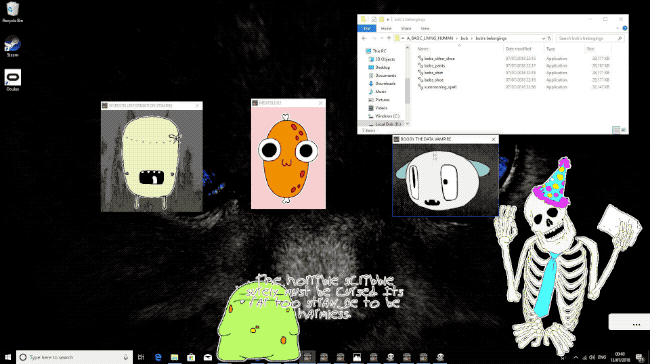
(Image taken from Free Game PLanet)
Cyberpet Graveyard presents itself as a “cursed relic”. It’s a set of folders structured like a “choose your path” adventure game. You find files in these folders that are characters. You learn about the origins of the graveyard. There’s a story to it. You find that by digging in.
Basically it’s a large directory structure that you are tasked with exploring.
We mull around in computer files all the time. We’re used to doing that. The idea of giving a player some “cursed” .zip file, and they explore these strange pieces of software, was really appealing. I don’t think I’m done with that idea yet but…
Writing for it was a pretty tremendous challenge, although the end result might not seem like one.
For example, I don’t think you can design story for something like this any other way. It’s absolutely NOT linear. There’s no way of “guiding” the player. You are left to whatever weird way they decide to interact with it.
So story for it had to be kept “loose”.
What if the player decides to search the folder for all .exe’s? What if they removed everything from the branching folder structures and just looked at all the files at once? All the different ways of interacting with it still had to make sense.
Experimental things like this break very easily. Even the breaking has to be intentional, or accounted for.
The story was built to loosely rely on “found objects”, and people’s inclination to piece things together themselves. The more you interact with all the separate pieces, the more the story makes sense.
As a whole, it works BUT this is as far as you could technically “push” a story for something like this. On Windows, you can only nest folders so often before they break, so even the nested options can’t be too elaborate… If you want something more complex, things are bound to break. It might not even work for all the different types of players (depending on how they decided to interact with it).

I’m happy that it worked out the way it did. It got a glowing review on PC Gamer with a verdict of “90” (which is pretty high), an honorable mention for IGF’s Nuovo award, won at IndieCade Europe, and a bunch of other stuff… so *sigh or relief* the story communicated!
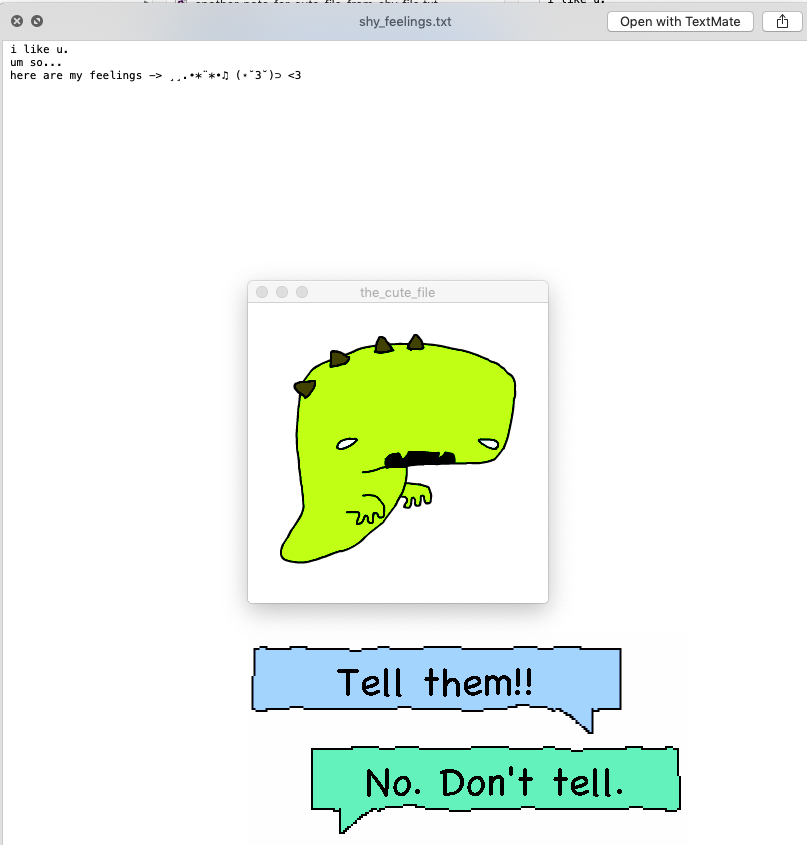
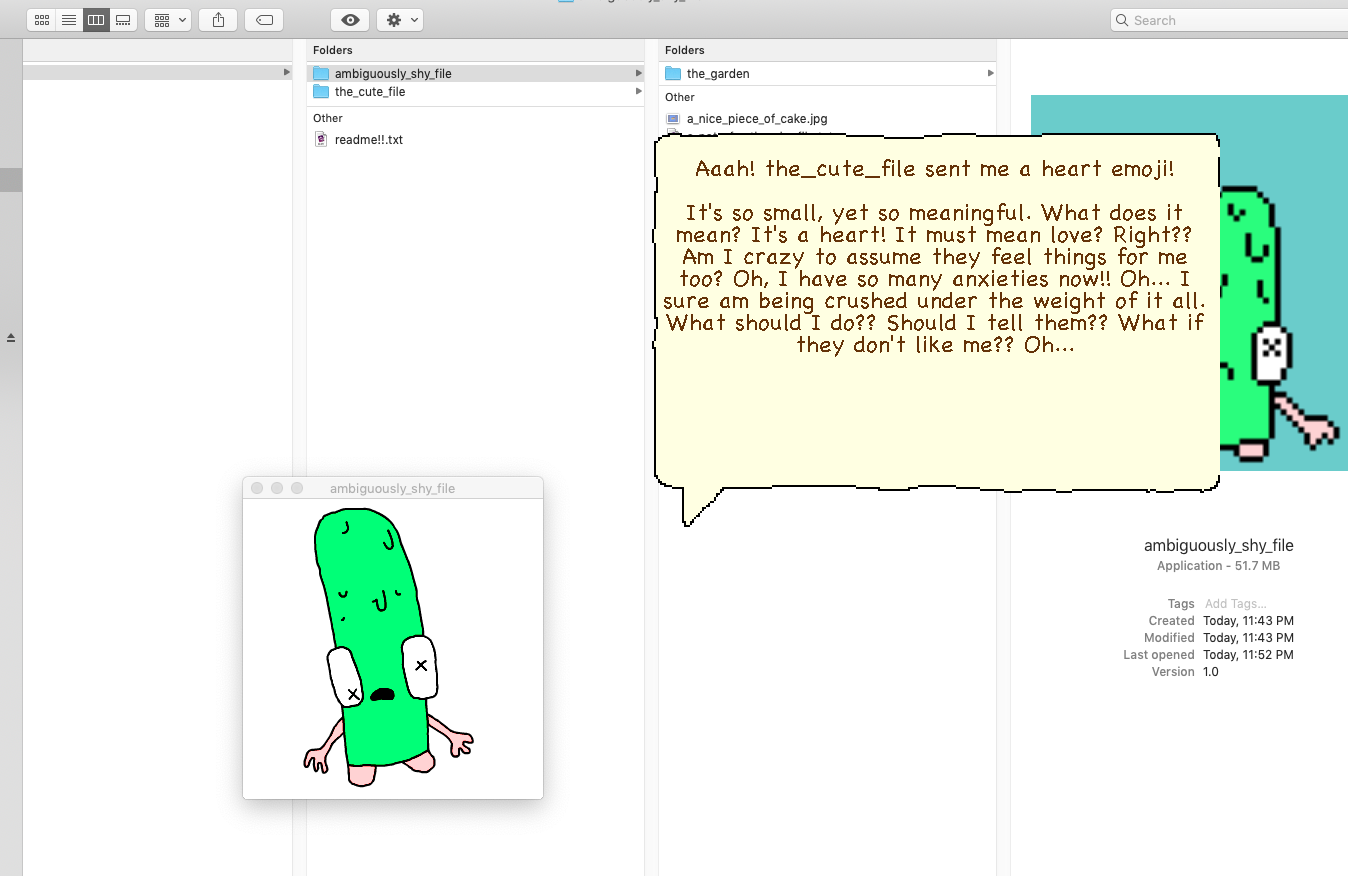
I tried to push this idea even further with A_DESKTOP_LOVE_STORY. After that game, things started to break. The concept is not fit for being more complicated, and I think that makes this stuff really exciting! Amusingly enough, you can’t exactly judge this work on the quality of “the story”, but the fact that it even runs should probably be enough.
In A_DESKTOP_LOVE_STORY you are given a small directory structure with two files living in separate folders. The files are the characters.
One file is the “shy file”, and they are in love with “the cute file”. Shy File asks you to deliver a note. The two eventually ask you to deliver love letters between the them.
Because of “system restrictions” they can’t do this themselves, so they need you (a system admin) to help out.
Eventually the two want to meet and you have to place them together into the same folder. They live hapily ever after then.
It was hard to pull all this off because it does not have a save system. Files are made aware of state based on what’s in their directory. Files needed to be made aware of WHAT folder they are in, who else is in the folder with them, and if they are in the folder together (before the end) then give some kind of message saying that they are not ready to see eachother yet… Something basic starts getting really complicated in terms of all the stuff you need to keep in mind, all the ways a player might break it (they can move the files around, there’s no real way of telling them to not do that)… There’s LOTS of room for error.
This is a simple concept. In terms of story, it’s ridiculously basic… BUT this stuff is a technical achievement just for the fact that you were able to get it to “be more” than what it really is (a filesystem is not meant to tell a story).
This is kind of how I view every indie game. At the end of the day, it’s a tremendous achievemnt to be able to tell a good story on something as weird and “indiferent to the human condition” as a computer system.
There’s still so much more that can be done!
~
So… ok… this is long and I think that’s a good wrap up. Storytelling on computers is very different. The fact that a writer is able to do what they do in these weird computer systems is a pretty tremendous achievement.
Please check out some of the recommendations and support indie developers!
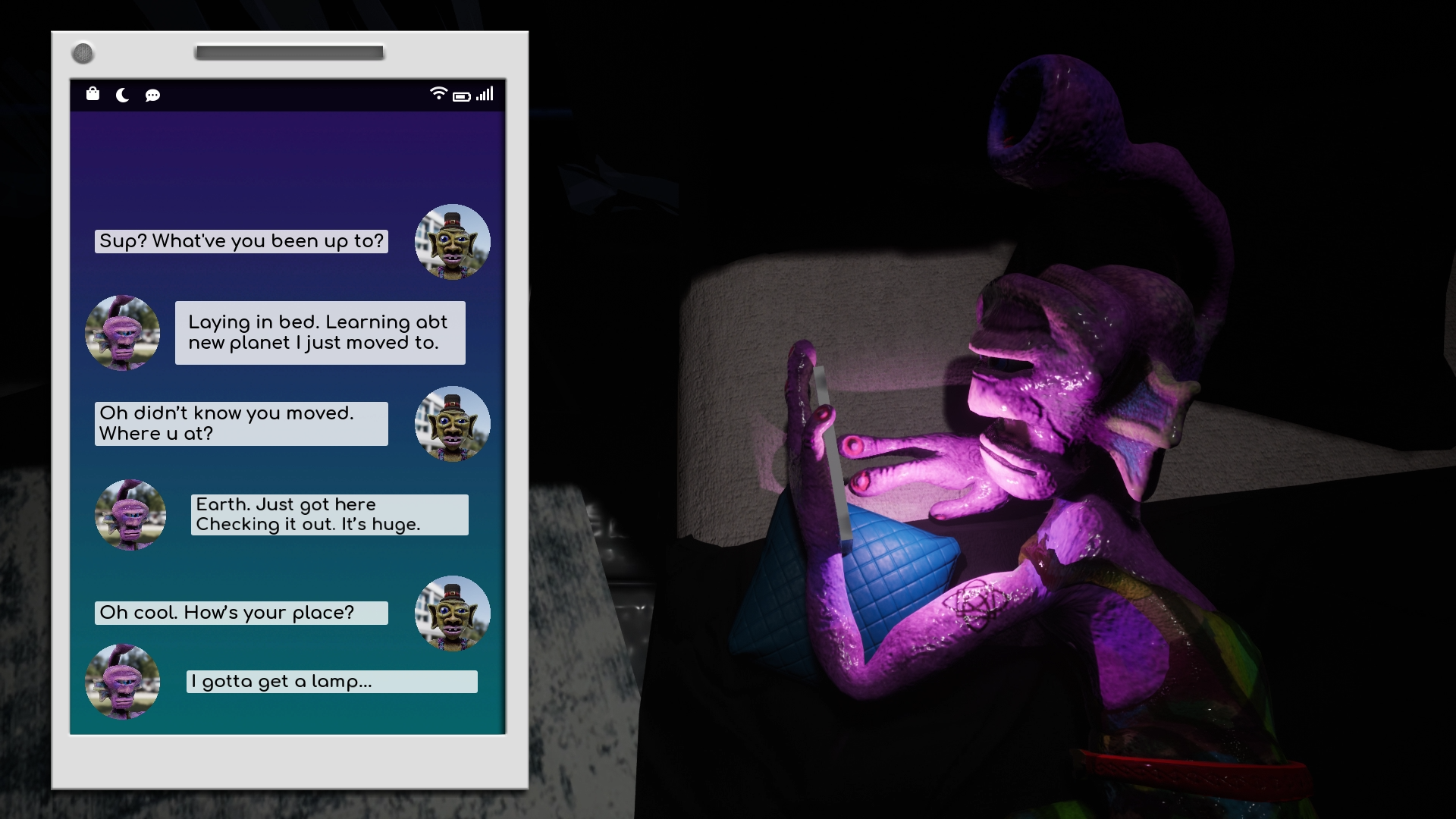
“Travel the galaxy, find a dog, watch billionaires put together Ikea furniture, get mentally healthy.”
Hi, which low-code or no-code apps do you recommend to make a game or create something small?